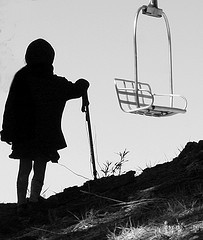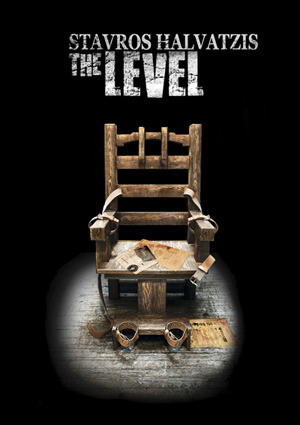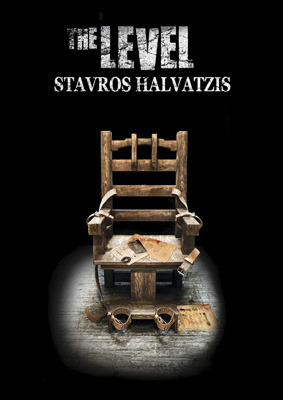Stavros Halvatzis's Blog, page 51
July 20, 2014
Do your Minor Characters have Character?

Minor Characters:
Do the minor characters in your story exude personality? Do they have small but noticeable ticks? Are they memorable in some or other way? If not, they need to be. Crafted well, minor characters will raise the overall standard of your story to new heights.In Body Heat, for example, D.A. Assistant, Ted Danson, is a minor character who pretends he is Fred Astaire, doing dance steps whenever he gets the chance. Odd but strangely captivating.
In Down Periscope, writer David Ward creates a wonderful array of minor characters for his Lt. Dodge to engage with:
Nitro, the electrician is dumb, erratic, but very efficient at his job. It’s as if his I.Q. has dropped as a result of all the electrical shocks he’s received over the years. In order to have Lt. Dodge communicate with his superiors, Nitro has to turn himself into a conducting conduit each time!
Engineer Howard Elder is a sailor with many years of experience, which seem to have made him eccentric, if not downright wacky. He sports a filthy Hawaiian shirt and stubble. It’s as if Pearl Harbour has traumatized him so that time has stood still and he has never changed clothes.
Executive Officer “Mart” Pascoe is rigid and authoritative with a bad temper. His intimidation tactics are compensation for his diminutive stature. He repeats orders from Lt. Dodge, by shouting them at the crew at the top of his voice.
In The matrix, the Oracle is a minor character loaded with strong habits and mannerisms. She smokes like a chimney, drawing on her cigarette with excessive deliberateness, is obsessed with baking, and never answers a question directly.
In Dark City, detective Eddie Walenski, played by Colin Friels, is obsessed with drawing circular patterns on the walls in his dark hole of a room. He moves and laughs like a man who has seen the dark truth about existence and it has tipped him over into madness.
Although the characters mentioned in the examples above are indeed minor in terms of the time and space they occupy in the story, each is made memorable through colorful mannerisms, ticks, or obsessions stemming from their backstory.
Summary
Minor characters need not be bland and uninteresting, serving the plot only. Giving them quirks, ticks, bumps, and scratches will help to make them more memorable thereby increasing the quality of your story.
Invitation
If you enjoyed this post, kindly share it with others. If you have a suggestion for a future one, please leave a comment and let’s get chatting. You may subscribe to this blog by clicking on the “subscribe” or “profile” link on the bottom right-hand side of this article. I post new material every Monday.
Image: Rennette Stowe
License: https://creativecommons.org/licenses/...
July 13, 2014
How to Take the Yawn out of Literature

The Big Yawn:
An irksome thought has been slouching around in my head for some time now. I haven’t written about it before, because, well, it can’t possibly be true, can it? And if it is, isn’t it more a reflection on me than the great novels and novelists it concerns?You decide, remembering that the opinions expressed below, are, of course, entirely my own.
The irksome thought is this: Why do so many great novels, some from the pens of literary giants, bore the pants off me? Why, in some works of literature, does it take two hundred pages for the protagonist to discover her goal? Why has the mythic succumbed to the microscopic, and the grand to the mundane, under the guise of being the real treasure?
Yes, many modern, prize-winning stories are immaculately crafted around intricate themes, characters, and imagery. Yes, they examine the human condition. Yes, they peel away the layers of illusion that surrounds us and shed light on the little things that make life what it is. Yes, they are about real people facing real problems—the opposite to Hollywood’s over-the-top spectacles, unrealistic settings, and extra-terrestrial endeavours.
But, my gosh, why must they be so darned boring? (Alas, to me, anyway).
Why must the goal of the story be so buried beneath details of someone’s bowel movements, explored at the most crude and mundane scale, chocked with backstory and philosophy, that the outer journey seems obscured, or is, at least, trivialised?
What’s wrong with creating an exciting, visible outer journey that is driven by relentless pace, surprises, and colorful events? After all, one of the greatest storytellers of all time, Homer, swore by it it. The Iliad and the Odyssey are about Heroes undertaking grand and challenging tasks—stories about larger-than-life struggles. Little room for boredom here.
But times have changed, you say. We don’t believe in Heroes anymore. We don’t believe in monsters. Besides, you’re talking about the adventure/science fiction/fantasy genres, you say. Literature has to root itself in reality if it is to be taken seriously. It is the little things, the everyday events examined through the lens of genius that ought to comprise modern, prize-winning literature, you stress, with a wag of your finger.
Well, that’s because we probably disagree on the function of story. Stories that have me reaching for two aspirins after reading just don’t cut it with me, anymore. I do want to grow, to observe, to be educated, but I also want to be entertained.
Am I suggesting that ‘serious’ literary novelists dispense with their aching character studies, searing observations into the human psyche, or their insightful, if obscure, philosophical rumination? Not at all. But I am suggesting that they give their stories some pace, make them interesting and, God forbid, grant them exciting goals.
After all, if this was good enough for Homer, it ought to be good enough for us all!
End of rant.
Summary
There is no reason that literary stories can’t be driven by pace, a tangible goal, and exciting, adventurous characters who intrigue as much as they entertain.
Invitation
If you enjoyed this post, kindly share it with others. If you have a suggestion for a future one, please leave a comment and let’s get chatting. You may subscribe to this blog by clicking on the “subscribe” or “profile” link on the bottom right-hand side of this article. I post new material every Monday.
Image: Björn Rixman
License: https://creativecommons.org/licenses/...
July 6, 2014
How to Pace Your Story

The Darkest Moment:
One of the reasons that we, as story tellers, need to master structure is so that we may position our narrative events, the high and lows, tension and release, in a way that keeps our readers and audience on their toes. Too much of a good or bad thing makes for boring stories. In this post, I want to focus on one particular structural element—the big gloom.Towards the end of the second act, way after the midpoint has occurred, the writer needs to craft a low amongst lows—a deeply disturbing and terrifying moment when the goal seems impossible to achieve, when the Hero is on his knees and the last ember of light is about to go out.
This is the second turning point, which unleashes the third act, the moment that screenwriting professor Richard Walter of UCLA calls the big gloom, and others have called the lowest ebb, or the darkest moment of the soul. If this moment—which should never be confused with the climax—occurs too early, at the end of the first act, for example, the story will run out of steam before the third act.
In Nothing in Common, the big gloom occurs when Tom Hanks finally understands the extent of his father’s medical condition.
In American Graffiti it occurs during Dreyfuss’s phone conversation with the fantasy girl in the T-bird when he learns that they will never meet—that he will never find what he seeks and that his destiny will forever remain unfulfilled as long as he stays with his old buddies in his claustrophobic, but safe, hometown.
In Terms of Endearment it is the moment in the hospital when we learn of the impending death of the young mother, and in About Last Night it occurs during the montage in which a ‘liberated’ Rob Lowe suffers the torments of hell for his lack of commitment to the very woman whom he earlier thought he wanted to be rid of.
Although these examples are triggered by outer journey events, their true power comes from the effect they have on the Hero’s inner journey. By forcing the Hero down to the deepest depths of doubt and despair, the story positions itself to tell of a final resurgence that is uplifting and engaging—a story with exciting variations, highs and lows which will keep readers and audiences breathless with anticipation.
Summary
The big gloom is the lowest point in the Hero’s journey. It occurs before the beginning of the end, and defines the point in the outer and inner journey where the Hero seems the furthest from achieving his goal.
Invitation
If you enjoyed this post, kindly share it with others. If you have a suggestion for a future one, please leave a comment and let’s get chatting. You may subscribe to this blog by clicking on the “subscribe” or “profile” link on the bottom right-hand side of this article. I post new material every Monday.
Image: Florent Lannoy
License: https://creativecommons.org/licenses/...
June 29, 2014
How to Give your Characters a Distinctive Attitude

Attitude:
Creating characters that are distinctive, unique, and interesting is not easy. It’s far easier to fall into the trap of assembling bland puppets that simply drive the plot forward, with little regard to attitude.What is attitude? It’s the underlying manner that motivates and shapes the way that characters speak, move, make decisions. It is the summation of a character’s backstory, value system, and intention.
An attitude can be optimistic, pessimistic, challenging, proud, sardonic, supercilious, courageous, cowardly, and so on.
How do you check for this distinctive quality in your characters? You simply ask yourself whether, in a scene where, say, two or more characters interact, you could swap dialogue and action between characters without a jarring loss of consistency. If you can, your characters are not distinctive, but are merely promoting the plot through their actions and dialogue.
Who but Bart would utter this eternally memorable line: Eat my shorts? Or, Bruce Banner warn: Don’t make me angry. You wouldn’t like it when I’m angry, or Dorothy: Toto, I don’t think we’re in Kansas anymore.
Can you imagine Bart swapping lines with Marge without our noticing? Not only would the speech idiom and expression be wrong, but the sort of things that Bart and Marge get up to wouldn’t tally.
Keeping a clear attitude in mind as we construct the characters in our stories will help us funnel dialogue and action in a way that makes them distinctive and keeps them on track.
Summary
Create a distinctive character attitude, garnered form character biography and backstory, to help you create effective and memorable characters.
Invitation
If you enjoyed this post, kindly share it with others. If you have a suggestion for a future one, please leave a comment and let’s get chatting. You may subscribe to this blog by clicking on the “subscribe” or “profile” link on the bottom right-hand side of this article. I post new material every Monday.
Image: Rhys A
License: https://creativecommons.org/licenses/...
June 22, 2014
Why Your Story’s Ending Determines its Beginning through its Middle

Storyline
Teachers of storytelling often tell us that we should know our story’s ending before we start writing its beginning. Syd Field immediately comes to mind. But why should this be the case? What’s so important about a story’s ending?Well, think of it this way: All journeys point toward their end. Simply put, the ending gives the story its purpose, its theme – it’s raison d’être. The theme, which contains the moral essence of the tale, emerges as the product of two opposing characters, or forces, clashing in a final showdown and yielding a winner: The winner carries the theme. Badly crafted endings, therefore, make for badly crafted stories.
The Matrix
In The Matrix, human love, imagination, and determination, trump machine intelligence. This only emerges at the end of the story with the resurrection of Neo through Trinity’s kiss and the result of his final confrontation with agent Smith. Had Neo died at the hands of Smith, the theme would have been exactly the opposite. Knowing the ending, therefore, curtails the kind of beginning your story may have, within your chosen genre, in order to maintain believability and coherence.
But to chart the path to a final location in three dimensional space, you need three points. That’s where the midpoint of your story comes in. The midpoint forces the beginning to deflect through a further point in story space in order to reach the endpoint. The midpoint, therefore, further constrains the sort of beginning your story may have and still achieve a pleasing shape. Carelessly placed beginning, middle, and endpoints result in meaningless squiggles.
How do you draw a pleasing story shape? You use mounting opposition to the Hero’s achieving his goal, driven by tension, pace, and conflict, to guide your hand. Joining your three points, then, will result in a zigzagging line which climbs upwards to the ending.
Summary
Crafting a story’s ending as an inevitable part of its beginning and middle makes for a coherent tale.
Invitation
If you enjoyed this post, kindly share it with others. If you have a suggestion for a future one, please leave a comment and let’s get chatting. You may subscribe to this blog by clicking on the “subscribe” or “profile” link on the bottom right-hand side of this article. I post new material every Monday.
Image: Victory of the People
License: https://creativecommons.org/licenses/...
June 15, 2014
How to Survive Slow Book Sales

Slow Sales?
So, you’ve written your first indie masterpiece, which, no doubt, has solicited glowing tributes from friends and family. You’ve edited it, procured an arresting cover, and posted it up on Amazon, eagerly awaiting that first shower of appreciative reviews before sales start to pour in.Early the next morning, you fire up your amazon kdp account, your eyes wide with expectation, and check your unit sales column.
Empty!
This can’t be. There must be some mistake. Perhaps America is off on holiday today. Wait. Don’t book sales take a while to show up? They’re probably bunching up at this very moment.
Anyway, best not think about it. Check again tomorrow.
The next day flips over like an egg on toast, sunny side down. It’s early morning. Really early. 2am to be precise. You need the bathroom and decide to check on sales again. You keep one eye shut.
The cold pang scuttles up from your solar plexus and settles on your chest. Still not a single sale to report! You’ll never get to sleep now. And you no longer feel like going to the bathroom.
You stumble to the kitchen to make yourself a cup of coffee, and, in a flood of self-doubt, you pour over your manuscript again, looking for mistakes.
You find two and quickly correct them. Damn! How did they manage to slip through? They could cost you your writing career! You should have hired a professional editor, after all. Too late now.
You upload the corrected manuscript.
Next day, having taken a mild off-the-shelf sedative to help you sleep, you manage to hold out till sunup before switching on your screen and checking on that sales column again.
Empty.
Well, that just about tears it! There can no longer be any doubt. You suck as a writer. People have exaggerated your abilities, probably because you seemed so darned determined to succeed.
That must be it. If you were really any good, this would not be happening. Talent, after all, is impervious to failure. Isn’t it?
Just as well you kept your day job. You’re never typing another word again. Ever!
Boo hoo.
—-
Ring a bell? It does for me. That is pretty much how I remember my early amazon experience with my first ever novel, Scarab. The book languished in obscurity for many days before sales began to appear. A trickle at first. Then a rivulet. And finally a torrent. But those first few days felt like an eternity.
With the sales, came the reviews. Most were very good. A couple were downright nasty. One of the reviewers suggested that my level of English languished below that of primary school. Ironically enough, whenever a nasty review came in, sales picked up dramatically, as if discerning readers were shouting it down with their credit cards.
Scarab went to number one in the bestseller lists in the scifi/hi-tech categories at amazon.com and amazon.co.uk and stayed in the top ten for many months. It was balm to my worst fears. The rest, as they say, is history.
So, what have I learnt from my experience, and from comments by fellow indie writers?
Simply this: if you have a modicum of talent and are willing to work hard, you will inevitably improve and eventually succeed.
But what do you focus on while sales remain tardy?
The answer is simple: Write that next book! And the next! And the next! John Locke believes that new writers shouldn’t publish before they have written several books. That way, when success comes for one, it will come for the others. He should know. He sold a million books.
We could too!
Summary
Write more books while waiting for sales of your current one to pick up; better still, write a whole bunch and release them simultaneously.
Invitation
If you enjoyed this post, kindly share it with others. If you have a suggestion for a future one, please leave a comment and let’s get chatting. You may subscribe to this blog by clicking on the “subscribe” or “profile” link on the bottom right-hand side of this article. I post new material every Monday.
Image by: fdecomite
License: https://creativecommons.org/licenses/...
June 8, 2014
Why Do You Write? No, Really!

Why Do You Write?
The opinions below, are, of course, entirely my own.Why do you write? This is, perhaps, the most important question I pose my students at the beginning of any new creative writing course. If they’re not sure, if they scratch their heads, study the ceiling, or choose that moment to text their friends, I advise them to take a break and think seriously about their motivation.
What I feel like saying is: Are you sure you want to do this?
Those of us who contemplate a career in writing, specifically in storytelling — especially as novelists — had better know. If we’re not driven by the unstoppable desire to write, if we’re not obsessed with understanding every nuance, texture and colour of a word, if our pulse doesn’t race when we hit that golden vein in a written passage, we’d be better off taking up a hobby instead.
Writing is hard. Accomplished writing is even harder. Earning a living as a writer is possible, thanks to the tablet revolution and marketplaces such as amazon.com, but it demands steely dedication, talent and luck. To make it as a writer you need to put your head down, keep learning your craft, on a daily basis, and never, ever, give up.
Knowledge and experience of the world are not enough, although they are required. Deep philosophical ideas are enriching, but they too, are not the secret—you want to impress me with your perspective on Existentialism? Go write an article in a philosophy journal. Ideas, at the cost of story, do not make for compelling novels, except for niche or elite readers. Nor, does artistic temperament, on its own. Sensitivity towards others and observational skills are essential, but they, too, are not sufficient.
So, what, in addition to the above, does one need to become a successful writer? The answer, I think, is rather obvious:
PASSION!
Passion is the secret ingredient that makes even the toughest journey enjoyable. Passion turns work into play and sweat into joy. Without passion you lose focus. Without passion you merely slog.
So, why do I write?
I write because passion compels me to. I have no choice. I can’t imagine anything else I’d rather do. Not in a million years. If I did, I’d be better off taking up bowls.
Summary
Passion is the essential ingredient in developing your writing career.
Image: Camdiluv
License: https://creativecommons.org/licenses/...
June 1, 2014
Many Lives, Many Levels, Which One is Yours?
The Level:
This short post, is, unashamedly, about the release of my new novella, The Level . I started writing it in Brisbane, Australia a couple of years ago, before pausing to complete Scarab II: Reawakening – the follow-up to my successful first novel, Scarab.Scarab’s amazing popularity on Amazon (it reached the #1 spot both in the US and the UK in the science fiction/high tech category), persuaded me on this course of action. Mission accomplished, I returned to The Level with gusto. Whether this new novella will reach the heights achieved by Scarab, we will just have to wait and see.
Below, is a short press release of The Level, as it appears on my amazon page.
A man, suffering from amnesia, wakes up in a pitch-black room, tied to what feels like a wooden chair. He discovers he is being held captive in a derelict insane asylum haunted by inmates who are determined to kill him. Help comes in the form of a beautiful, mysterious woman dressed in a black burka who offers to show him the way out, if only he can remember who he truly is.
If you enjoy your science fiction spiked with mystery, suspense and thrilling twists…
If you’re fascinated with the pervasive nature of love, consciousness and the limits of personal freedom…
Then scroll to the top of the page and grab this brand new novella, now!
—
There you have it. Effective? You be the judge of that. Perhaps you can write in and give me your opinion. I’d greatly appreciate it!
Better still, you could grab your own copy of the book and write a short review on amazon!
Summary
The Level is a novella in the science Fiction/Psychological/Thriller category, which explores the nature of love, consciousness, and personal freedom in the setting of an abandoned insane asylum.
May 25, 2014
Why a Poster and Book Cover is like a Movie Tagline
The Level
I am not much of a traditionalist when it comes to teaching creativity, being, as I am, a great believer in using an interdisciplinary methodology to help solve persistent creative problems. A frontal assault is not always the best way to break down barriers. One often needs to tackle the problem laterally.I recently had the privilege of delivering a course on how to create effective film loglines and taglines. Towards the end of the course I had the idea of warping things up by introducing a different approach to logline and tagline creation.
A logline, we are reminded, is the summation of the story, sans the ending, that introduces the main conflict, the protagonist and antagonist, and identifies that which must be learnt or acquired in order to fulfill the goal. A tagline, by contrast, is a phrase or sentence that captures some essential aspect of the story—in Apollo 13, the tagline is: Huston, we have a problem.
The exercise I set my students during class, was to have them envisage the essence of a story, not through the logline and tagline, as per usual, but by designing a poster or book cover instead. I emphasised that it didn’t matter whether they were skilled artists or not. What was important was to capture the spirit of the story as a graphic. They could “paint” a word portrait and use stick and block drawings to fill in the gaps, if need be.
The exercise was a wonderful success and threw up many interesting renditions of the story. It also proved the point that the creative process works best when using a multidisciplinary approach.
In much the same way, the book cover of my new novella, The Level, which is being released on Amazon in early June, captures an essential aspect of the story, and this, without giving too much away.
The book cover features a quintessential object from the story in a dark but intriguing way, and encourages the reader to ask the question: What is the role of the chair in the tale?
The tagline, which also draws heavily from the title, might well be: Many Lives. Many Levels. Which Level Are You?
True to form, the cover was designed before the tagline was developed and helped inspire some of The Level’s many twists and turns.
Summary
Using an offbeat multidisciplinary approach in tackling creative problems promotes inspiration and encourages insight.
May 18, 2014
How to Validate Your Characters’ Traits

Validating Character Traits
One of the wonderful things about being a teacher of writing, and author, is that I get to think about my craft and discover hidden treasures that surprise and reward me at unexpected moments.During a recent screenwriting lecture, a student asked me how to avoid making the forth trait of a character appear less trite and forced? She felt that in many of the films and books she’d read, some by accomplished authors, this contrasting trait appeared superficial and misplaced and detracted from the effectiveness of the overall work.
Just to rewind for a moment: A typical character comprises of four defining traits, the forth of which stands in stark contrast to the others—this, in order to create inner tension and generate interest in the character. For example: a generous, intelligent, educated man who keeps stupidly choosing the wrong spouses; a merciless, relentless, serial killer who supports a favourite charity dedicated to uplifting the education of underprivileged children in the inner city …
I thought about this for a while and realised that I hadn’t, perhaps, sufficiently emphasised the importance of tying each character trait, and especially the fourth trait, into that character’s backstory.
So, if a man keeps stupidly choosing the wrong spouse, find an event in his past that explains this trait, and make it integral to the story. Was he rejected by girls as a youth for a specific reason? Is he simply compelled to accept marriage proposals by women because he knows what rejection feels like?
In other words, seek to explain, in a believable way, where his ‘stupidity’ trait stems from, then reveal its backstory at a significant moment—typically at a turning point, or at the midpoint. The same goes for the remaining three traits. Doing so will deepen our understanding of that character and legitimise his contrasting trait.
Speaking of which, I’d really love to know what bit of backstory fully explains Hannibal Lector’s (the TV series) drive to create macabre meals from human flesh. Perhaps you can write in and let me know.
Summary
Tying character traits into specific and significant events of a character’s life through the backstory, especially the fourth contrasting trait, is essential in creating characters that are interesting, yet believable.
Invitation
If you enjoyed this post, kindly share it with others. If you have a suggestion for a future one, please leave a comment and let’s get chatting. You may subscribe to this blog by clicking on the “subscribe” or “profile” link on the right-hand side of this article. I post new material every Monday.
Image: Jukka Zitting
License: https://creativecommons.org/licenses/...





